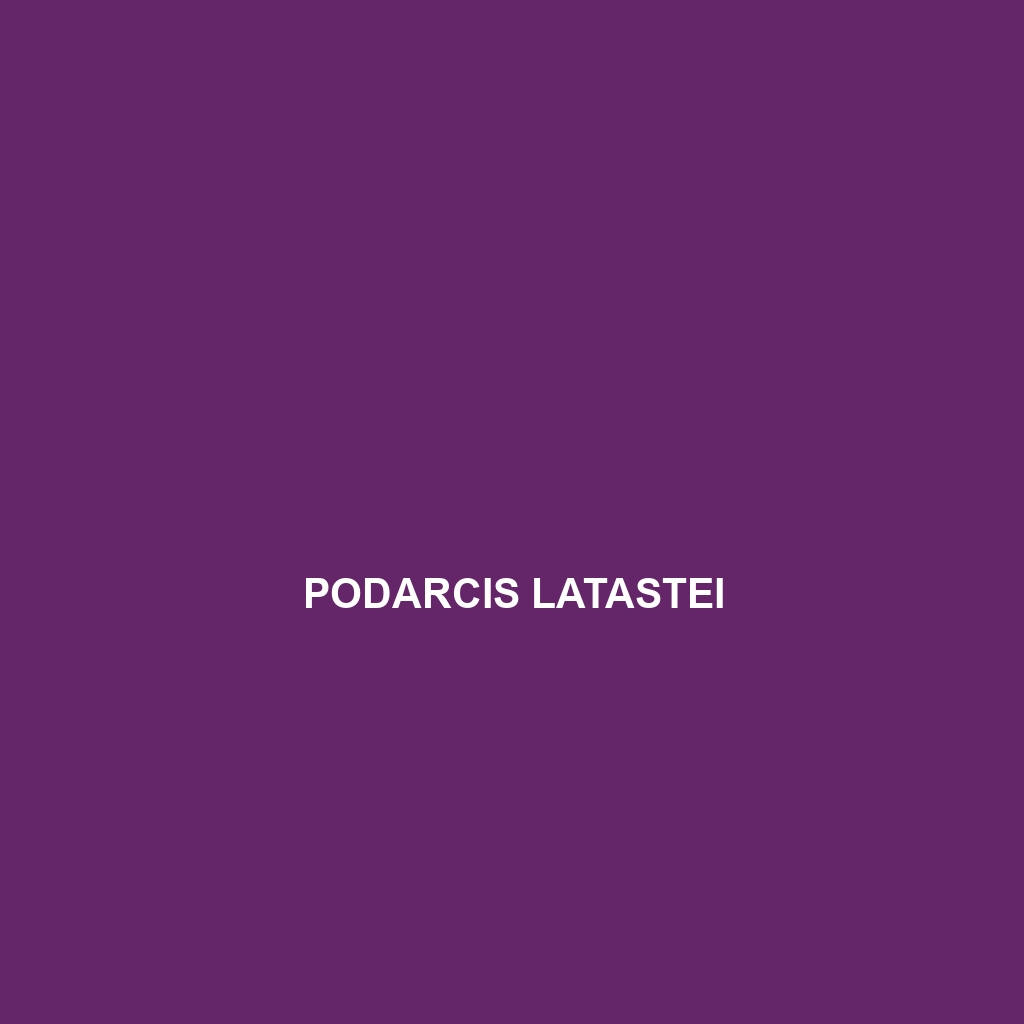Common Name
Podarcis latastei
Scientific Name
Podarcis latastei
Habitat
Podarcis latastei, commonly known as Lataste’s lizard, is primarily found in the Mediterranean regions of southwestern Europe, including parts of Spain, France, Italy, and Portugal. This species thrives in a variety of habitats such as shrublands, rocky hills, and open woodland areas. The typical climate where Podarcis latastei is located features hot, dry summers and mild, wet winters, typical of the Mediterranean environment. Additionally, these lizards are often spotted basking on rocks in sunny areas and may also inhabit grasslands and temperate forests. The presence of diverse vegetation, such as bushes and low plants, plays a crucial role in providing shelter and hunting grounds for this species.
Physical Characteristics
Podarcis latastei exhibits distinct physical traits that make it easily identifiable. Adults typically range from 5 to 8 inches (12 to 20 cm) in length, with a slender body and a long tail that can constitute over half of its total length. The coloration varies, but they generally possess a striking mix of brown, gray, and greenish hues, which help them blend into their surroundings. The back is often adorned with dark spots or bands, while the undersides tend to be lighter. One unique feature is their sharp claws, which are adept at climbing rocky surfaces. These physical characteristics not only contribute to their camouflage but also enhance their capabilities in navigating their environment.
Behavior
In terms of behavior, Podarcis latastei are primarily diurnal, meaning they are most active during the day. They exhibit territorial behavior, particularly during the mating season, where males establish and defend territories against rivals. Social interactions among these lizards include displays of aggression, such as head-bobbing and push-ups. During warmer months, they can often be found basking in the sun, which is crucial for thermoregulation. Interestingly, Lataste’s lizards also exhibit a unique behavior of hiding in crevices or beneath shrubs when threatened, showcasing their adaptability in avoiding predators.
Diet
Podarcis latastei is classified as an opportunistic carnivore and primarily feeds on a diet rich in insects. Grasshoppers, crickets, and various beetles constitute the bulk of their dietary intake. Additionally, they are known to consume small invertebrates and occasionally plant matter. Their feeding behavior is characterized by a quick, agile snatch-and-bite technique, allowing them to effectively capture prey. This dietary pattern helps maintain the insect population in their habitats, contributing to the overall ecological balance.
Reproduction
The reproductive cycle of Podarcis latastei typically takes place during the warmer months, with mating occurring between April and June. After a gestation period lasting approximately 4 to 6 weeks, females lay clutches of about 3 to 10 eggs in sandy or loose soil. These eggs incubate for around 2 to 3 months before hatching, usually in late summer. The hatchlings are independent from birth and exhibit rapid growth during the warm season. Parental care is absent in this species, as the offspring must immediately fend for themselves in their natural habitat.
Conservation Status
The conservation status of Podarcis latastei is currently classified as Least Concern according to the IUCN Red List. However, habitat destruction, particularly due to urban development and agricultural expansion, poses potential threats to local populations. Efforts to conserve their habitats, coupled with awareness campaigns to educate the public on the importance of preserving their environments, are critical in ensuring the long-term survival of this species. Ongoing research and monitoring are necessary to track population changes and implement effective conservation strategies.
Interesting Facts
One fascinating fact about Podarcis latastei is their incredible ability to regenerate their tails if they are lost due to predation or injury, a common survival trait among many lizard species. This regenerative capability not only aids in evasion from predators but also highlights their adaptation to the predatory pressures within their ecosystem. Another interesting aspect is their role in local folklore, where they are often seen as symbols of luck and agility in Mediterranean cultures.
Role in Ecosystem
Podarcis latastei plays a vital role in its ecosystem as both a predator and a prey species. By feeding on various insects, they help control insect populations, which can be particularly beneficial for plants and crops in the surrounding area. As prey, they constitute a food source for birds of prey and other larger predators, contributing to the balance of the food web. Their presence indicates a healthy ecosystem, as their populations can reflect the overall well-being of their environment through their abundance and distribution.
